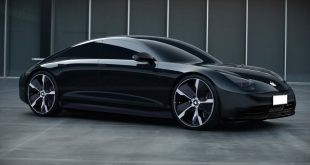Driverless cars are on the cusp of widespread production. The technology exists, test trials are routinely run, and the success rates are higher than ever. Only a few factors (which, admittedly, are fairly large) are preventing fully scalable prototypes from entering the consumer market. Let’s explore some of them.
High Cost
Currently, the robotics and hardware that give driverless cars its self-driving capability cost a minimum of US$75,000 per vehicle, not including the cost of the vehicle itself. With middle income earners paying an average of $34,000 for their vehicles, the driverless car seems out of reach for the masses.
While there are cars that exist in this high price bracket – Ferraris or Lamborghinis – the high-end market is not the focus of driverless car developers or manufacturers. In order to bring that price down for true accessibility, two major events need to occur: miniaturisation and standardisation.
Visual Appeal
If vehicle marketing surveys tell us anything, style ranks as one of the top reasons people select a particular car. For driverless cars, visual appeal has fallen to the wayside as developers focus on the tech. The components that make for a driverless experience are large and ungainly, for now, at least. Mounted on the roof in large boxes, they often include some kind of camera turret.
Miniaturisation will take care of aesthetic issues. Much like we now have quality picture-taking technology small enough to fit our slim mobile devices, driverless mechanics will gradually reduce in size as well. Another major benefit of miniaturisation will be lowered manufacturing costs.
One Technology to Rule Them All
Competing machinery in the field also restricts the market. A successful camera is perhaps the most important piece of the driverless car puzzle. Without a reliable system, there is no way to prevent things like collisions and the resulting injury after a car accident from happening. There are many technologies, both new and old, that are being considered for use.
RADAR technology has already been around for years. The focus with RADAR, which incorporates camera and ultrasound as well, has been one of refinement. RADAR systems have not yet reached a level of detail recognition sufficient for use.
Laser-based systems, known as Light Detection And Ranging or “LIDAR,” have attracted the most attention. The technology is highly invested in, and is much more likely to be adopted for use in driverless cars.
LIDAR provides incredible detail of its surroundings, but lacks refinement in a different way than RADAR. Due to its extreme sensitivity, the LIDAR system detects falling snow and rain, which are obviously not obstacles to driving.
Along with major industry players like Ford, Tesla, and Toyota, and automotive industry tech companies like Bosch and Aptiv (formerly Delphi), over 50 startup companies are researching and developing their own LIDAR systems. Once the industry agrees on a single technological approach that becomes standard, prices will fall as research turns to boosting efficiency, miniaturisation, and cost-reduction.
The Small Players May Become the Big Players
While LIDAR pioneer Velodyne offers a system for about $75K, new startups like a firm called Ouster may pull in ahead in the cost race. Ouster’s new system, OS1, is available for a relatively cheap $12K and claims to be top-performing.
On the other hand, Velodyne has the experience and legacy knowledge on their side that provides just as much opportunity to win the market. Literally dozens of other firms are working hard to become the new industry leader.
Senior Analyst Anirudh Venkitaraman with global consulting firm Frost & Sullivan predicts that “[c]onsolidation in the market…will enable cost-effective, solid-state LIDAR development for mass adoption post 2025.”
Only time will tell which technology succeeds and which company will lead the way, but most analysts agree on one thing: the consumer market for driverless cars is less than a decade away.
Image via: TechnologyReview
 ForceGT.com Car News, Car Reviews, Video Reviews, Tuning and much more.
ForceGT.com Car News, Car Reviews, Video Reviews, Tuning and much more. 







